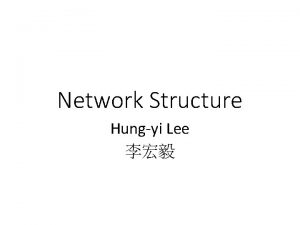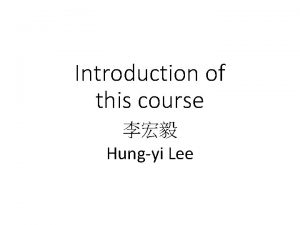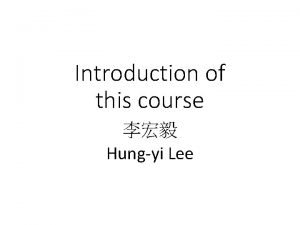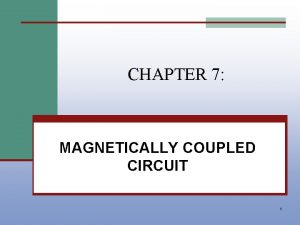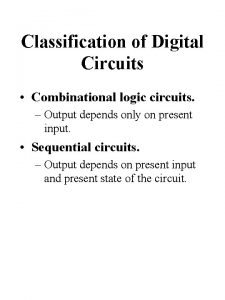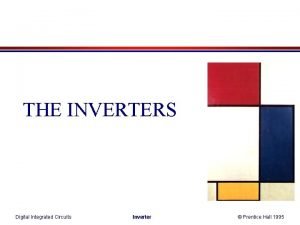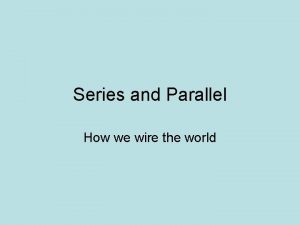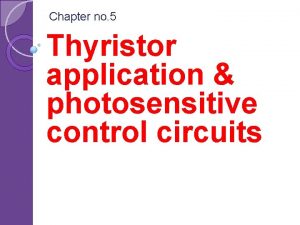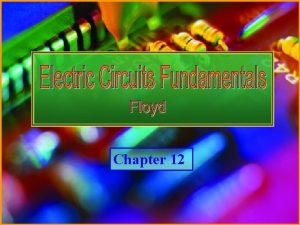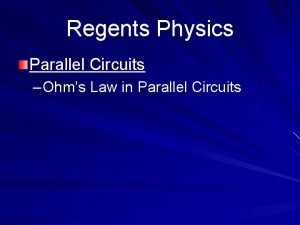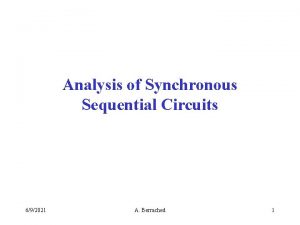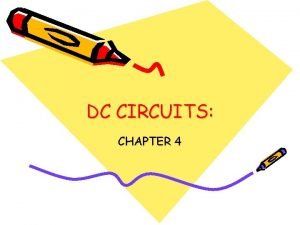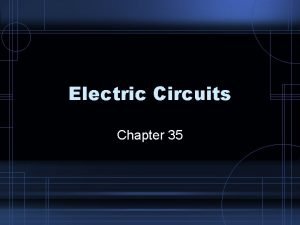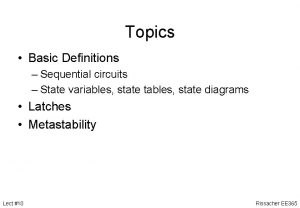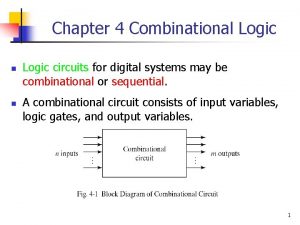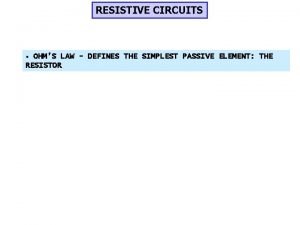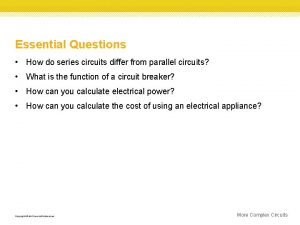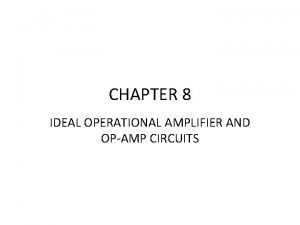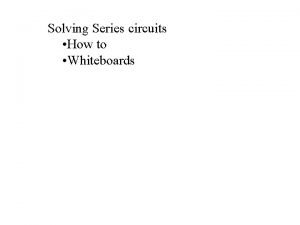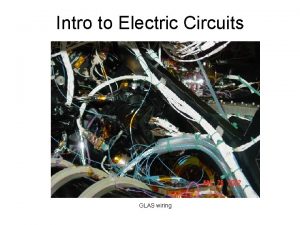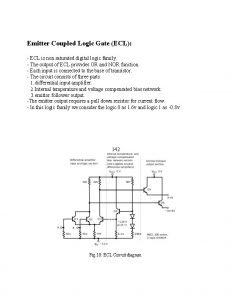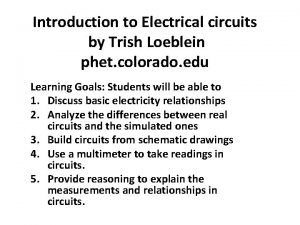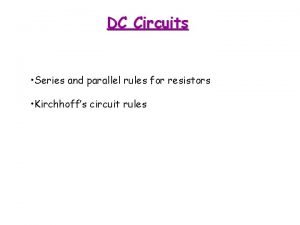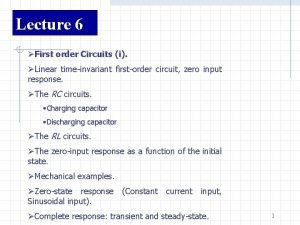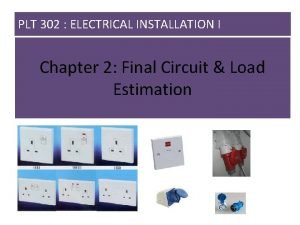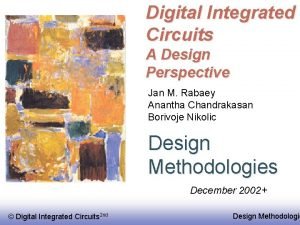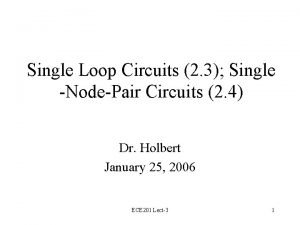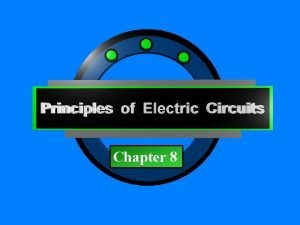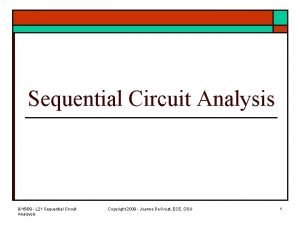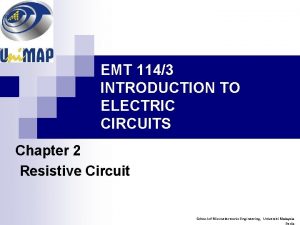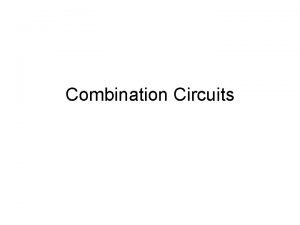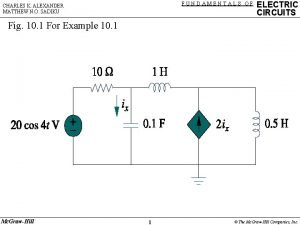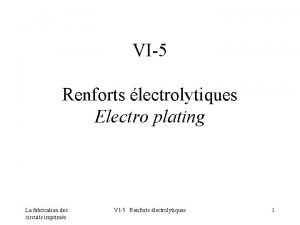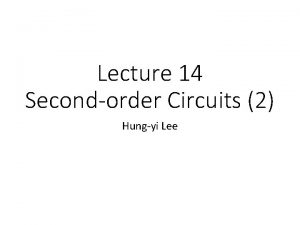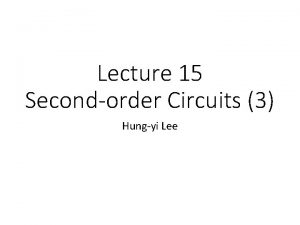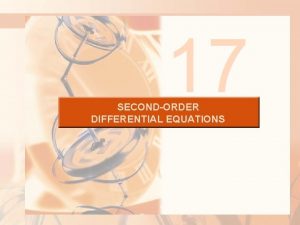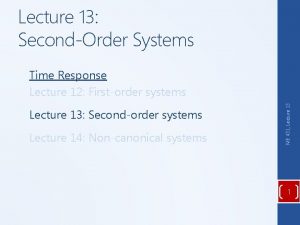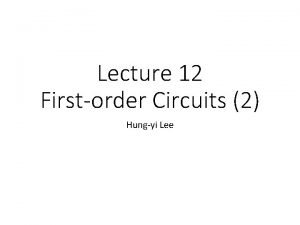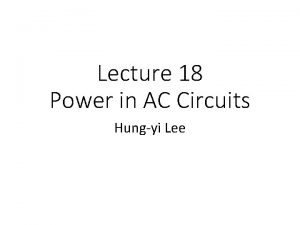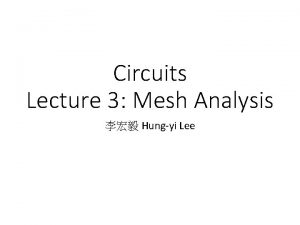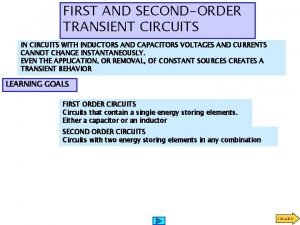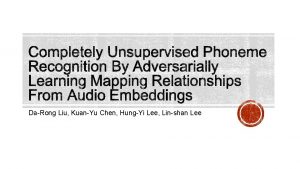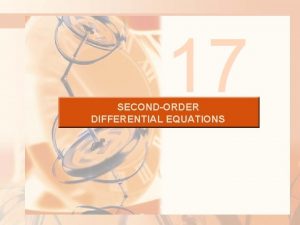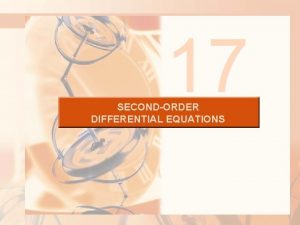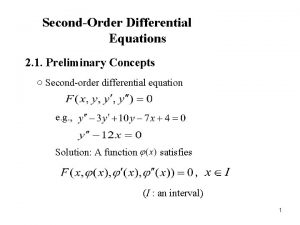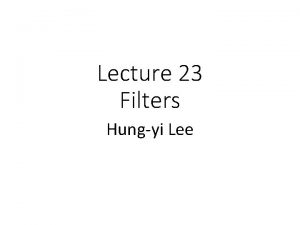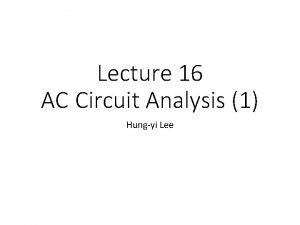Lecture 13 Secondorder Circuits 1 Hungyi Lee Secondorder
















































- Slides: 48

Lecture 13 Second-order Circuits (1) Hung-yi Lee

Second-order Circuits • A second order-circuit contains two independent energy-storage elements (capacitors and inductors). Capacitor + inductor 2 Capacitors 2 inductors

Second-order Circuits • Steps for solving by differential equation (Chapter 9. 3, 9. 4) • 1. List the differential equation (Chapter 9. 3) • 2. Find natural response (Chapter 9. 3) • There is some unknown variables in the natural response. • 3. Find forced response (Chapter 9. 4) • 4. Find initial conditions (Chapter 9. 4) • 5. Complete response = natural response + forced response (Chapter 9. 4) • Find the unknown variables in the natural response by the initial conditions

Solving by differential equation Step 1: List Differential Equation

Systematic Analysis Mesh Analysis

Systematic Analysis Mesh Analysis Find i. L: Find v. C:

Systematic Analysis Node Analysis

Systematic Analysis Node Analysis Find v. C: v. C=v Find i. L:

v 1 Example 9. 6 Find i 2 v 1: v 2

v 1 v 2 Example 9. 6 Find i 2 Target: Find v 2 from the left equations Equations for v 1 and v 2 Then we can find i 2

v 1 Example 9. 6 Find i 2 Find v 2

v 1 v 2 Example 9. 6 Find i 2 Replace with

Example 9. 7 • Please refer to the appendix

Summary – List Differential Equations

Solving by differential equation Step 2: Find Natural Response

Natural Response • The differential equation of the second-order circuits: y(t): current or voltage of an element α = damping coefficient ω0 = resonant frequency

Natural Response • The differential equation of the second-order circuits: Focus on y. N(t) in this lecture

Natural Response y. N(t) looks like: Characteristic equation

Natural Response Real Overdamped Critical damped λ 1, λ 2 is Complex Underdamped Undamped

Solving by differential equation Step 2: Find Natural Response Overdamped Response

Overdamped Response λ 1, λ 2 are both real numbers y. N(t) looks like

Overdamped Response

Solving by differential equation Step 2: Find Natural Response Underdamped Response

Underdamped

Underdamped y. N(t) should be real. Euler's formula:

Underdamped y. N(t) should be real. Euler's formula: (no real part)

Underdamped Memorize this! a and b will be determined by initial conditions

Underdamped L and θ will be determined by initial conditions

Underdamped

Solving by differential equation Step 2: Find Natural Response Undamped Response

Undamped is a special case of underdamped.

Solving by differential equation Step 2: Find Natural Response Critical Damped Response

Critical Damped Overdamped Underdamped Critical damped Not complete

Critical Damped (Problem 9. 44)

Solving by differential equation Step 2: Find Natural Response Summary

Summary Fix ω0, decrease α (α is positive): Overdamped Critical damped Decrease α, smaller R Underdamped Undamped Decrease α, increase R

Fix ω0, decrease α (α is positive) The position of the two roots λ 1 and λ 2. α=0 Undamped

Homework • 9. 30 • 9. 33 • 9. 36 • 9. 38

Thank You!

Answer • 9. 30: v 1’’ + 3 v 1’ + 10 v 1 = 0 • 9. 33: y. N=a e^(-0. 5 t) + b te^(-0. 5 t) • 9. 36: y. N=a e^(4 t) + b e(-6 t) • 9. 38: y. N=2 Ae^(3 t) cos (6 t+θ) or y. N=2 e^(3 t) (acos 6 t + bsin 6 t) • In 33, 36 and 38, we are not able to know the values of the unknown variables.

Appendix: Example 9. 7

Example 9. 7 Mesh current: i 1 and ic

Example 9. 7 (1): (2) – (1):

Example 9. 7

Appendix: Figures from Other Textbooks


Undamped

 Hungyi lee
Hungyi lee Hungyi lee
Hungyi lee Hungyi
Hungyi Hungyi
Hungyi Hungyi lee
Hungyi lee What is a parallel circuit in physics
What is a parallel circuit in physics Magnetically coupled circuits lecture notes
Magnetically coupled circuits lecture notes 01:640:244 lecture notes - lecture 15: plat, idah, farad
01:640:244 lecture notes - lecture 15: plat, idah, farad Classification of combinational logic
Classification of combinational logic Integrated circuits
Integrated circuits Pros and cons of series circuits
Pros and cons of series circuits Thyristor circuits applications
Thyristor circuits applications Electric circuits fundamentals floyd
Electric circuits fundamentals floyd Power management integrated circuits
Power management integrated circuits How to find r total in a parallel circuit
How to find r total in a parallel circuit Complete and incomplete circuit
Complete and incomplete circuit Analysis of synchronous sequential circuits
Analysis of synchronous sequential circuits Voltage and inductance relationship
Voltage and inductance relationship Chapter 35 electric circuits
Chapter 35 electric circuits Sequential circuits
Sequential circuits Table of 32
Table of 32 Parallel circuit with 3 bulbs
Parallel circuit with 3 bulbs Passive sign convention circuits
Passive sign convention circuits Networks and graphs: circuits, paths, and graph structures
Networks and graphs: circuits, paths, and graph structures Series circuit questions
Series circuit questions Integrated
Integrated Sequential circuits prelude
Sequential circuits prelude Ideal op
Ideal op Comparateur 3 bits table de vérité
Comparateur 3 bits table de vérité Solving series circuits
Solving series circuits Parallel circuits
Parallel circuits Ecl gate
Ecl gate Phet electric circuits
Phet electric circuits Series and parallel circuits rules
Series and parallel circuits rules Mealy or moore machine
Mealy or moore machine Ohm's law worksheet doc
Ohm's law worksheet doc First order circuits
First order circuits Radial circuits
Radial circuits Digital integrated circuits
Digital integrated circuits Single node pair circuit
Single node pair circuit Combinational logic circuits lab report
Combinational logic circuits lab report Binary systems and logic circuits
Binary systems and logic circuits Principles of electric circuits 10th edition answer key
Principles of electric circuits 10th edition answer key Rl circuit theory
Rl circuit theory Sequential circuit analysis
Sequential circuit analysis Introduction to electric circuits
Introduction to electric circuits Combination circuits
Combination circuits Sadiku
Sadiku Cellule de hull
Cellule de hull
